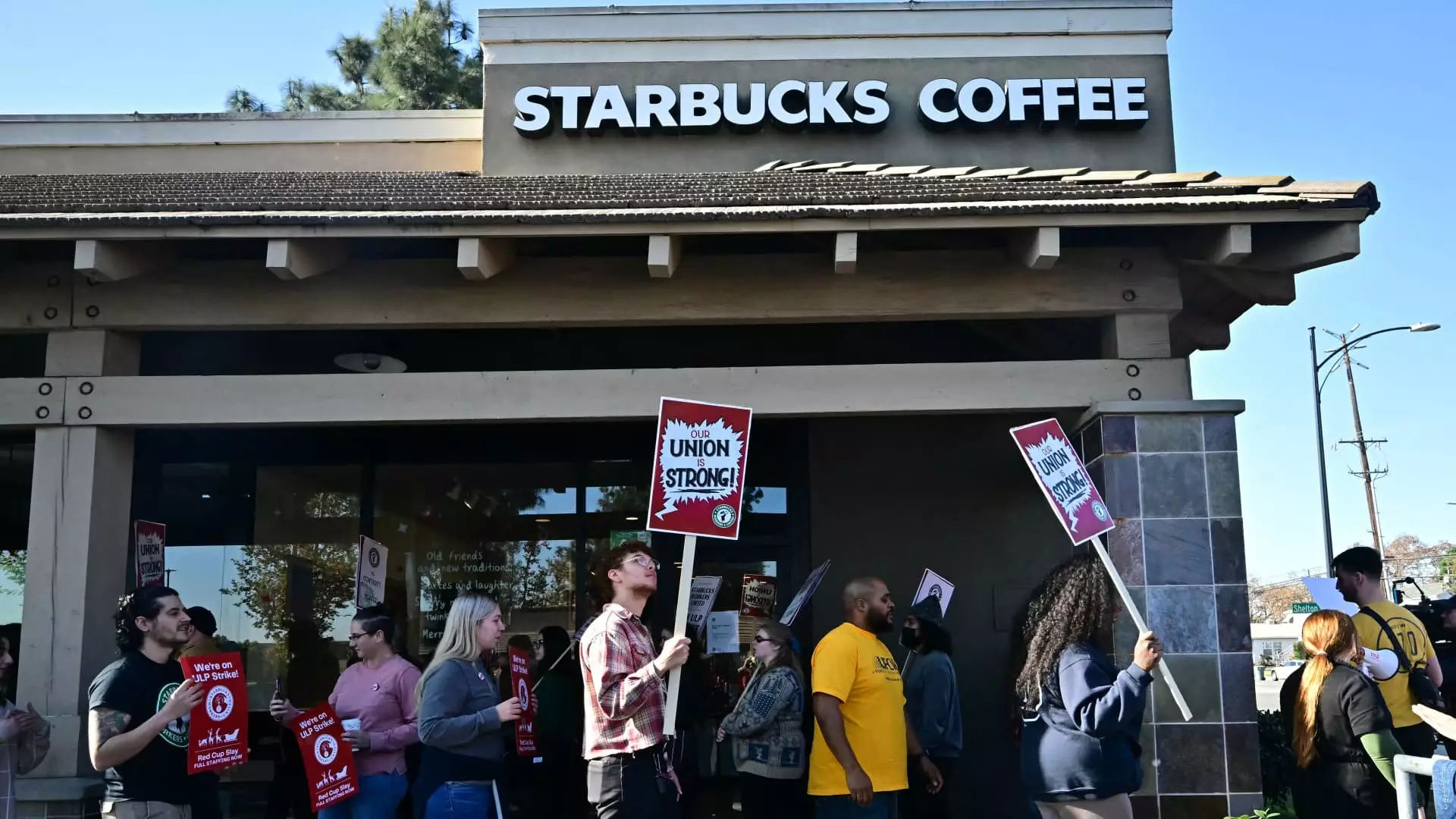A significant labor movement is currently unfolding within Starbucks, as approximately 5,000 employees across more than 300 locations in 45 states have joined a growing strike. Although this number represents just 3% of all U.S. Starbucks outlets, the timing aligns perilously close to the company’s busiest season, when holiday sales typically soar. Initiated by the Service Employees International Union (SEIU) in collaboration with Starbucks Workers United, the strike not only highlights worker grievances but also marks an increased mobilization for better labor conditions at the popular coffee chain.
Demands of the Baristas
The impetus for this strike centers around allegations of unfair labor practices and stalled negotiations over a new contract that would potentially affect thousands of workers. Baristas are advocating for substantial wage increases, seeking an immediate salary boost of up to 64%, alongside a cumulative 77% increase throughout the proposed three-year contract period. This urgent call for a livable wage reflects a broader trend among service industry workers who are increasingly unwilling to tolerate stagnant wages amidst rising living costs.
Lynne Fox, the president of the Workers Union, articulated this sentiment, stressing that workers are fully aware of their value and will not accept offers that do not genuinely recognize their contributions. With a workforce that is increasingly attuned to matters of equity and labor rights, the strike is a manifestation of collective frustration aimed at altering the status quo within the company.
In response to the strike and the union’s wage demands, Starbucks executives have characterized the proposal as “not sustainable.” They emphasize that many employees, particularly those working over 20 hours a week, already benefit from a robust overall pay structure averaging $30 an hour when factoring in both wages and benefits. Moreover, Sara Kelly, Starbucks’ executive vice president, pointed out that negotiations had previously stalled when the union walked away from discussions.
This narrative of the negotiations presents a complex picture. While Starbucks aims to showcase its existing benefits structure, the employee sentiment clearly suggests a disconnect between management’s perception of fairness and the workers’ lived experiences. As negotiations remain in limbo, the tension surrounding the strike raises significant questions about how large corporations engage in dialogue with their workforce.
This current strike comes at a critical juncture for Starbucks, particularly as the company has recently seen changes at the executive level, notably with CEO Brian Niccol’s arrival from Chipotle. His history with labor negotiations, including settlements with the National Labor Relations Board during his prior tenure, adds another layer of complexity to an already multifaceted labor environment.
Looking ahead, how Starbucks navigates this situation will be crucial not just for its brand reputation, but also for the larger discourse on labor rights in the hospitality sector. As baristas demand recognition and fair treatment, the outcome of this strike may well influence labor relations in other multinational corporations. The rising tide of worker advocacy signals a shift in priorities for many employees, who increasingly expect not only equitable treatment but also meaningful participation in the governance of their workplaces.



Leave a Reply